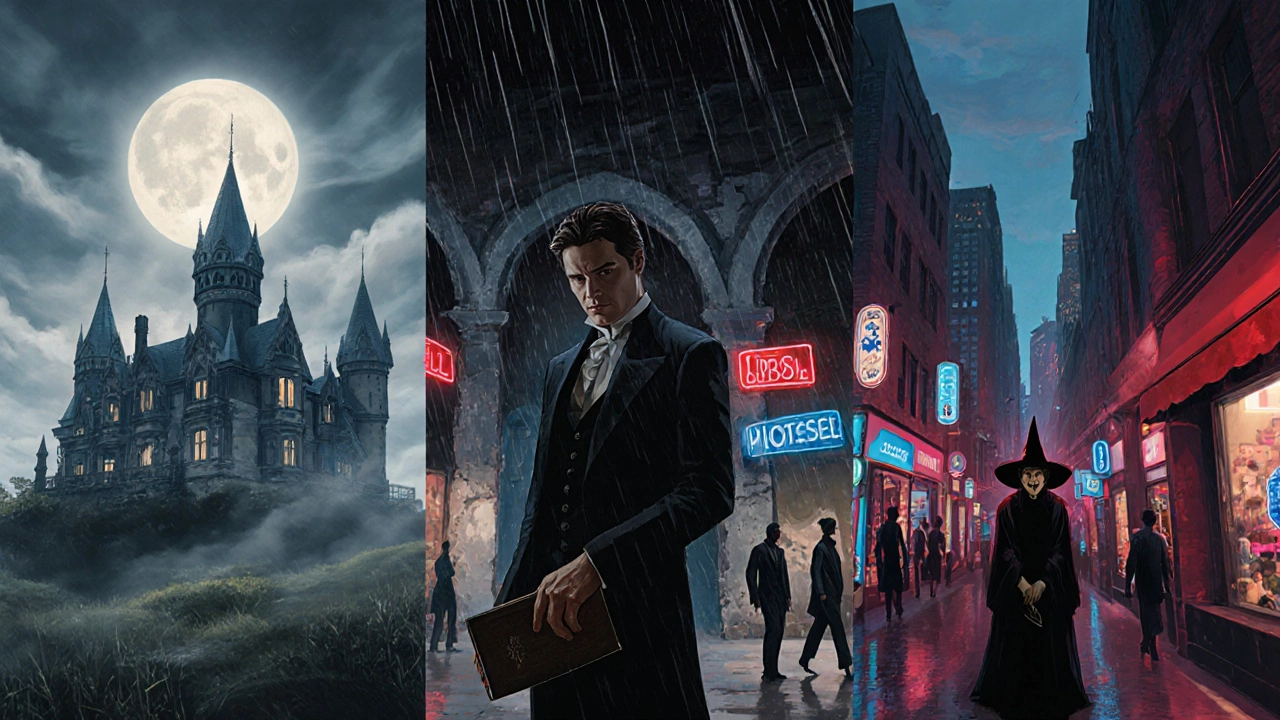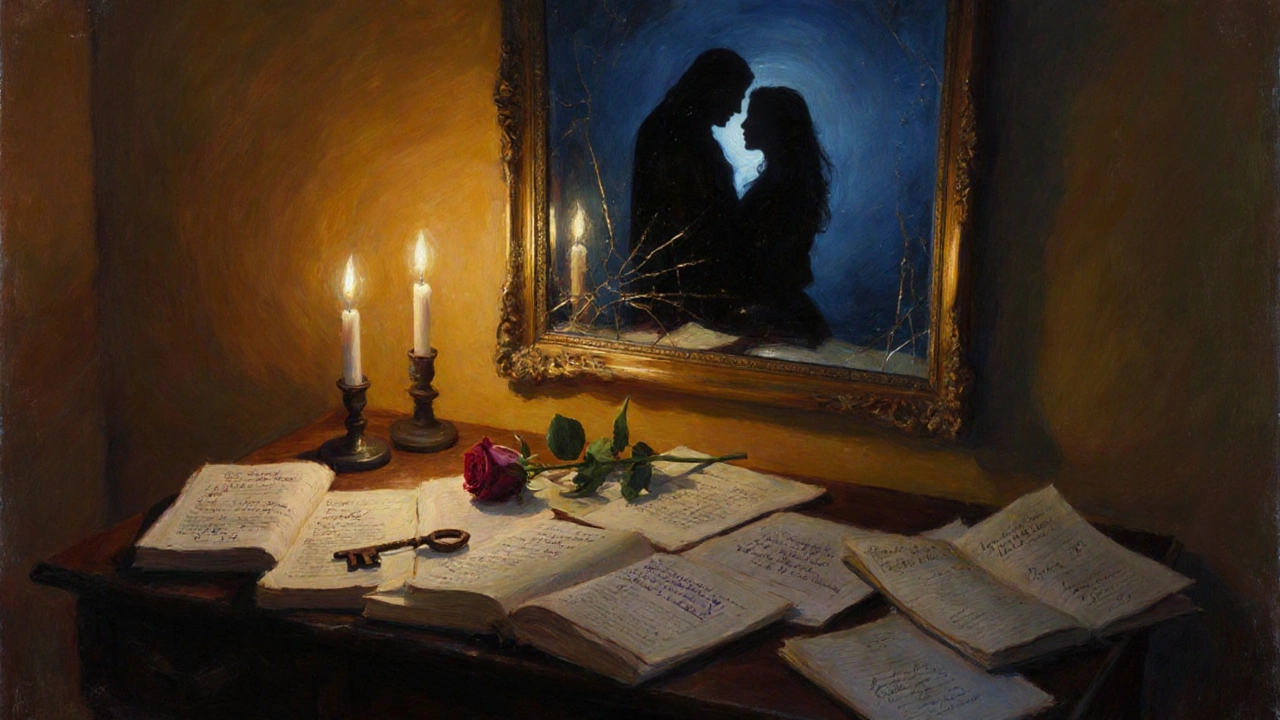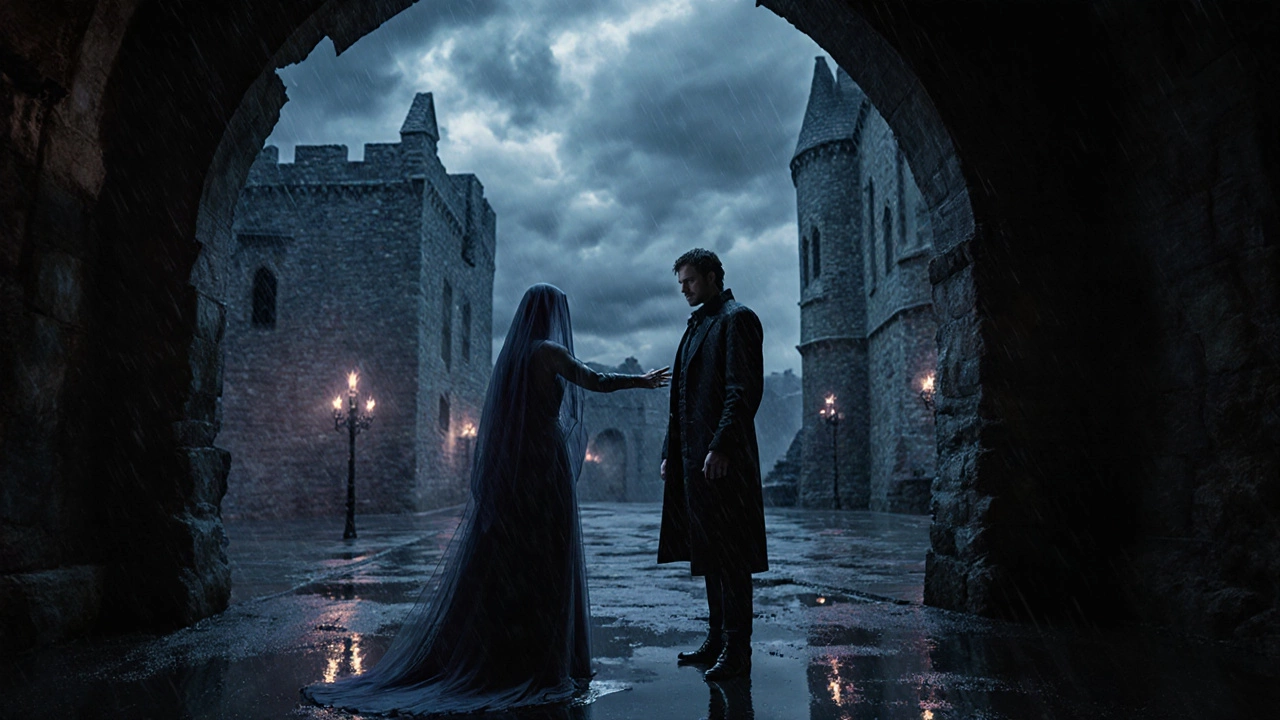Dark Romance Genre Matchmaker
1. What kind of setting most excites you?
2. Which protagonist type resonates most with you?
3. What central theme should drive your story?
4. How should the story conclude?
5. How intense should the emotional stakes be?
Quick Takeaways
- Dark romance mixes sensual tension with gritty, morally gray characters.
- Key hallmarks: brooding atmosphere, high emotional stakes, and often tragic or ambiguous endings.
- It overlaps with gothic romance, paranormal romance, and contemporary romance, but each brings a distinct flavor.
- Typical protagonists include anti‑heroes, damaged nobles, or supernatural beings.
- Readers who crave intensity, complexity, and a hint of danger gravitate toward this subgenre.
What Exactly Is Dark Romance?
When you hear dark romance is a subgenre of romance that blends erotic tension with brooding, often morally ambiguous characters and a haunting atmosphere, you might picture a castle drenched in rain, a torn‑up hero, and love that feels as perilous as it is passionate. Unlike mainstream romance, dark romance doesn’t shy away from pain, power struggles, or the shadowy parts of human nature. The genre thrives on contrast-intimacy next to dread, love next to loss.
How Dark Romance Fits Within the Broader Romance Genre
The romance genre is any narrative where a central love story drives the plot and typically ends with a satisfying emotional resolution. Dark romance sits on the darker side of that spectrum, keeping the core love arc but swapping the “happily ever after” for a more ambiguous, sometimes bittersweet conclusion. While classic romance might feature a sunny beach wedding, dark romance often ends with an echoing promise-love survived, but at a cost.

Key Sub‑Genres That Overlap With Dark Romance
Understanding dark romance is easier when you compare it to its close cousins.
| Attribute | Dark Romance | Gothic Romance | Paranormal Romance |
|---|---|---|---|
| Typical Setting | Urban nightscapes, crumbling estates, secretive labs | Victorian mansions, mist‑filled moors | Modern cities with hidden supernatural enclaves |
| Main Protagonist Type | Anti‑hero, damaged noble, conflicted scientist | Brooding aristocrat, tortured heroine | Vampire, werewolf, witch, or other mythic being |
| Mood & Tone | Bleak, intense, psychologically charged | Melancholic, haunting, atmospheric | Exciting, otherworldly, often lighter despite darkness |
| Common Themes | Power, redemption, moral ambiguity | Decay, forbidden love, ancestral curses | Identity, belonging, the clash of worlds |
| Ending Style | Ambiguous, tragic, or hard‑won hope | Often tragic or bittersweet | Usually hopeful with a supernatural twist |
The gothic romance is a historic offshoot that leans heavily on eerie settings, family secrets, and a sense of doom. paranormal romance is a genre that pairs romantic plots with supernatural beings or phenomena. Both share darkness, but dark romance is less about the supernatural and more about human (or near‑human) darkness.
Core Elements That Define Dark Romance
Every dark romance story tends to check off a few essential boxes.
- Anti‑hero Protagonist: A flawed lead-often a brooding alpha, a tormented heir, or a morally conflicted scientist-who isn’t instantly likable.
- Intense Emotional Stakes: The love affair is tied to personal redemption, revenge, or survival.
- Atmospheric Setting: Rain‑slick streets, abandoned warehouses, or dimly lit libraries create a mood that mirrors inner turmoil.
- Power Imbalance: Relationships often feature a clear dominance/submission dynamic, which can be physical, emotional, or societal.
- Ambiguous or Tragic Endings: The conclusion may leave readers yearning, questioning whether love truly overcame the darkness.
These ingredients combine to give the reader a roller‑coaster of desire and dread.
Character Archetypes: Anti‑Heroes and Complex Heroines
In dark romance, the anti‑hero is a lead who possesses both admirable qualities and deep flaws, often walking the line between villain and savior. Think of a billionaire with a violent past who hides his tenderness behind a steel facade. On the other side, the heroine usually isn’t a damsel; she’s resilient, sometimes morally ambiguous herself, and often wields her own power-whether through intellect, hidden lineage, or a personal vendetta.
Plot Devices That Keep the Tension High
Two common storytelling tools make dark romance feel fresh.
- Love Triangle: Adding a rival (often a “good” love interest) forces the anti‑hero to confront his own demons. The love triangle is a narrative structure where three characters are romantically entangled, creating conflict and choice, heightening stakes.
- Tragic Ending: Not every story ends happily. The tragic ending is a conclusion where love is lost, altered, or survived at great cost, leaving a lingering emotional impact reinforces the genre’s focus on realism and emotional depth.

Why Readers Turn to Dark Romance
Because it feels authentic. In a world where Instagram filters smooth out imperfections, dark romance offers raw, unfiltered emotion. Readers enjoy the catharsis of watching characters wrestle with inner monsters-often mirroring their own unresolved feelings. The genre also provides a safe space to explore taboo dynamics, power play, and the allure of the “bad boy” without real‑world consequences.
Popular Dark Romance Titles to Get You Started
- “The Dark Duet” by C.J. Roberts - a story of a kidnapped heiress and a mercenary with a haunted past.
- “When Darkness Falls” by J.S. Archer - a modern gothic tale set in a New York art gallery that doubles as a crime scene.
- “Twisted Vows” by K. L. Storm - a paranormal twist where the anti‑hero is a cursed vampire seeking redemption through love.
- “Raven’s Edge” by L. Montgomery - a contemporary romance featuring a corporate mogul with a secret involvement in illegal experiments.
Each of these books showcases the core elements listed above, giving you a taste of how dark romance can vary from gritty realism to supernatural intrigue.
How to Write Dark Romance (If You’re an Aspiring Author)
- Start with a morally gray protagonist. Give them a concrete flaw that drives the plot.
- Choose a setting that reflects internal conflict-rain‑soaked streets, decaying mansions, or a sterile research lab work well.
- Build tension through power imbalances and clear stakes (e.g., a secret that could ruin both characters).
- Introduce a love triangle or a tragic obstacle early to keep the tension alive.
- Decide on your ending: will love survive, transform, or be sacrificed?
Remember, the key is balance. Too much darkness can alienate readers; sprinkle moments of vulnerability and redemption to keep the emotional roller‑coaster enjoyable.
Frequently Asked Questions
What differentiates dark romance from gothic romance?
Dark romance focuses on contemporary or slightly modern settings and moral ambiguity, while gothic romance leans heavily on historic, haunted locations and themes of family curses. Both share a brooding tone, but dark romance is more character‑driven, whereas gothic romance emphasizes atmosphere and legacy.
Do dark romance books always have tragic endings?
Not always, but many end with ambiguity or a hard‑won hope. The genre values emotional realism over a neat happy‑ever‑after, so endings often leave a lingering ache.
Can paranormal elements appear in dark romance?
Yes. When supernatural beings are used to amplify the darkness-like a vampire with a tortured past-it blends into paranormal romance, but the core focus remains on the gritty, emotional relationship.
Is dark romance suitable for young adult readers?
Some dark romance titles are tailored for YA by moderating explicit content and focusing on self‑discovery. However, many adult dark romances contain mature themes and intense violence, so age‑appropriate selection matters.
What are common pitfalls for writers new to this genre?
Over‑glorifying the anti‑hero’s toxicity, neglecting character growth, or relying too heavily on shock value without emotional payoff can turn readers off. Balance darkness with moments of genuine connection.

